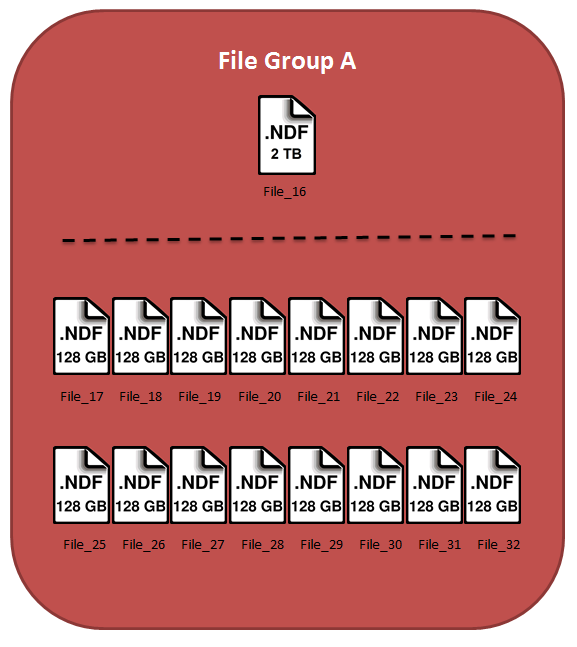Several people have asked me to post my script for automatically cycling through each database in an instance, restoring a virtual hyperbac database, performing consistency checks, and then e-mailing out the results, in reference to my previous post.
I am sorry it took me so long to get this put together, but pulling it out of my environment was the tough part. I have a lot of infrastructure built up around this, so I had to extract the parts and try to cull it into one consistent script. I have not tested this script very thoroughly, so please use with caution. Make sure it works in your environment. Keep in mind that you must have hyperbac already installed and setup to make proper user of this script.
Thank you for your patience:
SET NOCOUNT ON; -- Constants DECLARE @BACKUP_DAYS_THRESHOLD INT = 8, @NEW_BACKUP_FILE_LOCATION VARCHAR(256) = 'C:\Temp\BackupFileCopies\', @DATAFILE_RESTORATION_LOCATION VARCHAR(256) = 'C:\Temp\DataFileRestores\', @DB_MAIL_PROFILENAME SYSNAME = 'Database Administrators', @EMAIL_RECIPIENTS VARCHAR(1000) = 'yourEmail@yourDomain.com' -- Retrieve List of Last Full Backups and their Backup Files IF OBJECT_ID('TempDB..#lastBackupsTaken') IS NOT NULL DROP TABLE [#lastBackupsTaken] CREATE TABLE [#lastBackupsTaken] ( [serverName] VARCHAR(256), [databaseName] VARCHAR(256), [physicalFileSpec] VARCHAR(256), [backupFinishDate] DATETIME ) INSERT INTO [#lastBackupsTaken] ( [serverName], [databaseName], [physicalFileSpec], [backupFinishDate] ) SELECT @@SERVERNAME, [BackupSets].[database_name], [MediaFamily].[physical_device_name], [BackupSets].[backup_finish_date] FROM [msdb].[dbo].[backupset] AS BackupSets INNER JOIN ( SELECT [database_name], MAX([backup_start_date]) AS MaxBackup_Start_Date FROM [msdb].[dbo].[backupset] WHERE [type] = 'D' AND [backup_finish_date] IS NOT NULL GROUP BY [database_name] ) AS Constrained ON [BackupSets].[database_name] = [Constrained].[database_name] AND [BackupSets].[backup_start_date] = [Constrained].[MaxBackup_Start_Date] AND [BackupSets].[type] = 'D' INNER JOIN [msdb].[dbo].[backupmediafamily] AS MediaFamily ON [BackupSets].[media_set_id] = [MediaFamily].[media_set_id] -- Retrieve List of the FileGroups in the Databases as of the Last Full Backups IF OBJECT_ID('TempDB..#logicalFilesForlastBackupsTaken') IS NOT NULL DROP TABLE [#logicalFilesForlastBackupsTaken] CREATE TABLE [#logicalFilesForlastBackupsTaken] ( [serverName] VARCHAR(256), [databaseName] VARCHAR(256), [logicalName] VARCHAR(256) ) INSERT INTO [#logicalFilesForlastBackupsTaken] SELECT @@SERVERNAME, [BackupSets].[database_name], [LogicalFiles].[logical_name] FROM [msdb].[dbo].[backupset] AS BackupSets INNER JOIN ( SELECT [database_name], MAX([backup_start_date]) AS MaxBackup_Start_Date FROM [msdb].[dbo].[backupset] WHERE [type] = 'D' AND [backup_finish_date] IS NOT NULL GROUP BY [database_name] ) AS Constrained ON [BackupSets].[database_name] = [Constrained].[database_name] AND [BackupSets].[backup_start_date] = [Constrained].[MaxBackup_Start_Date] INNER JOIN [msdb].[dbo].[backupfile] AS LogicalFiles ON [BackupSets].[backup_set_id] = [LogicalFiles].[backup_set_id] AND [LogicalFiles].[is_present] = 1 -- Create a list of all databases we are going to restore and Consistency Check (DBCC CHECKDB) IF OBJECT_ID('TempDB..#databasesToCheck') IS NOT NULL DROP TABLE [#databasesToCheck] CREATE TABLE [#databasesToCheck] ( [databaseName] VARCHAR(256), [executionOrder] INT IDENTITY(1,1) ) INSERT INTO [#databasesToCheck] ( [databaseName] ) SELECT [databaseName] FROM [#lastBackupsTaken] WHERE [databaseName] NOT IN ( 'master', 'tempdb' ) GROUP BY [databaseName] -- For each database in the list, copy the backup files, run a Red-Gate Hyperbac Virtual Restore, Run Consistency Check, Record the results, and then drop the database DECLARE @currentDBIdentifier INT, @maxDBIdentifier INT, @currentDBName VARCHAR(256), @lastBackupTime DATETIME, @statusMessage VARCHAR(MAX) = '', @statusCode INT = 0, @errorMessage VARCHAR(MAX) = '', @messageSubject VARCHAR(256), @sql VARCHAR(MAX) = '', @backupCopyResults VARCHAR(MAX) = '', @currentBackupFileIdentifier INT, @maxBackupFileIdentifier INT, @commandLine VARCHAR(2000), @databaseWasRestored BIT = 0 IF OBJECT_ID('TempDB..#backupFilesToHandle') IS NOT NULL DROP TABLE [#backupFilesToHandle] CREATE TABLE [#backupFilesToHandle] ( [oldFileSpec] VARCHAR(256), [newFileSpec] VARCHAR(256), [executionOrder] INT IDENTITY(1,1) ) IF OBJECT_ID('TempDB..#commandLineResults') IS NOT NULL DROP TABLE [#commandLineResults] CREATE TABLE [#commandLineResults] ( [outputLine] NVARCHAR(255) ) IF OBJECT_ID('TempDB..#checkDBResults') IS NOT NULL DROP TABLE [#checkDBResults] CREATE TABLE [#checkDBResults] ( [ServerName] [varchar](100) NULL, [DatabaseName] [varchar](256) NULL, [Error] [varchar](256) NULL, [Level] [varchar](256) NULL, [State] [varchar](256) NULL, [MessageText] [varchar](7000) NULL, [RepairLevel] [varchar](256) NULL, [Status] [varchar](256) NULL, [DbId] [varchar](256) NULL, [Id] [varchar](256) NULL, [IndId] [varchar](256) NULL, [PartitionId] [varchar](256) NULL, [AllocUnitId] [varchar](256) NULL, [File] [varchar](256) NULL, [Page] [varchar](256) NULL, [Slot] [varchar](256) NULL, [RefFile] [varchar](256) NULL, [RefPage] [varchar](256) NULL, [RefSlot] [varchar](256) NULL, [Allocation] [varchar](256) NULL, [insert_date] [datetime] NULL ) -- Begin Database Loop SELECT @currentDBIdentifier = MIN([executionOrder]), @maxDBIdentifier = MAX([executionOrder]) FROM [#databasesToCheck] WHILE (@currentDBIdentifier < @maxDBIdentifier) BEGIN SELECT @currentDBName = [databaseName] FROM [#databasesToCheck] WHERE [executionOrder] = @currentDBIdentifier -- Let's make sure the last database backup isn't too old (in case some third-party script clears off old database backups) SELECT @lastBackupTime = MAX([backupFinishDate]) FROM [#lastBackupsTaken] WHERE [databaseName] = @currentDBName IF (DATEDIFF(DAY,@lastBackupTime,GETDATE()) > @BACKUP_DAYS_THRESHOLD) BEGIN -- The oldest backup for this database was taken too long ago SET @statusMessage = @statusMessage + 'DBCC FOR ' + @currentDBName + ' was not properly performed (Last Backup Too Old) ' SET @statusCode = @statusCode + 1 END ELSE BEGIN -- Prepare the Backup Files TRUNCATE TABLE [#backupFilesToHandle] INSERT INTO [#backupFilesToHandle] ( [oldFileSpec], [newFileSpec] ) SELECT [physicalFileSpec], @NEW_BACKUP_FILE_LOCATION + SUBSTRING([physicalFileSpec],((LEN([physicalFileSpec]))-(CHARINDEX('\',REVERSE([physicalFileSpec])))+2),(CHARINDEX('\',REVERSE([physicalFileSpec])))-1) FROM [#lastBackupsTaken] WHERE [databaseName] = @currentDBName -- Start the restore script and copy the backup files SET @sql = 'RESTORE DATABASE [' + @currentDBName + '_Virtual] FROM ' -- Begin Backup File Loop SELECT @currentBackupFileIdentifier = MIN([executionOrder]), @maxBackupFileIdentifier = MAX([executionOrder]) FROM [#backupFilesToHandle] WHILE (@currentBackupFileIdentifier <= @maxBackupFileIdentifier) BEGIN -- Create Command Line syntax for file copy SELECT @commandLine = 'copy "' + [oldFileSpec] + '" "' + [newFileSpec] + '" /Y' FROM [#backupFilesToHandle] WHERE [executionOrder] = @currentBackupFileIdentifier -- Truncate the Command Line Results Table TRUNCATE TABLE [#commandLineResults] INSERT INTO [#commandLineResults] EXEC [master].[dbo].[xp_cmdshell] @commandLine -- Record Copy Results SET @backupCopyResults = @backupCopyResults + ' For command issued=' + @commandLine + ' ' SELECT @bakCopyResults = @bakCopyResults + ' ' + ISNULL([outputLine],'NULL') FROM [#commandLineResults] -- Add this file to the restore script SELECT @sql = @sql + 'DISK=N''' + [newFileSpec] + ''',' FROM [#backupFilesToHandle] WHERE [executionOrder] = @currentBackupFileIdentifier SET @currentBackupFileIdentifier = @currentBackupFileIdentifier + 1 END -- Loop to next Backup File -- Now that all backup files have been moved and we have added their new locations to the restore script, -- we now need to remove the trailing comma SET @sql = LEFT(@sql,LEN(@sql)-1) + ' WITH ' -- Now we need to add the database files to the restore script SELECT @sql = @sql + 'MOVE N''' + [logicalName] + ''' TO N''' + @DATAFILE_RESTORATION_LOCATION + LEFT(@currentDBName,35) + '_Virtual_' + LEFT([logicalName],35) +'.vmdf'',' FROM [#logicalFilesForlastBackupsTaken] WHERE [databaseName] = @currentDBName -- Remove the trailing comma SET @sql = @sql + 'NORECOVERY, STATS=1, REPLACE ' -- Now, we have the files moved and the restoration script created. Next thing to do is to restore the database (using hyperbac) SET @databaseWasRestored = 0 BEGIN TRY -- Restore the database EXEC(@sql) -- Recover the database SET @sql = 'RESTORE DATABASE [' + @currentDBName + '_Virtual] WITH RECOVERY, RESTRICTED_USER' EXEC(@sql) -- Put the virtual DB in Simple Recovery Model, since we do not need anything higher than that for the DBCC CHECKDB SET @sql = 'ALTER DATABASE [' + @currentDBName + '_Virtual] SET RECOVERY SIMPLE WITH NO_WAIT' EXEC(@sql) SET @databaseWasRestored = 1 END TRY BEGIN CATCH SET @errorMessage = @errorMessage + @currentDBName + ' ' + @backupCopyResults + ' ' + 'Error Number: ' + CONVERT(VARCHAR,ERROR_NUMBER()) + ', Error Message: ' + ERROR_MESSAGE() + ' ' SET @statusMessage = @statusMessage + 'DBCC FOR ' + @currentDBName + ' was not restored properly (error message below). ' SET @statusCode = @statusCode + 1 END CATCH -- Only continue if the database was properly restored IF (@databaseWasRestored = 1) BEGIN -- Run DBCC CHECKDB and Save the results to a table INSERT INTO [#checkDBResults] ( [Error], [Level], [State], [MessageText], [RepairLevel], [Status], [DbId], [Id], [IndId], [PartitionId], [AllocUnitId], [File], [Page], [Slot], [RefFile], [RefPage], [RefSlot], [Allocation] ) EXEC('DBCC CHECKDB(''' + @currentDBName + '_Virtual'') WITH TABLERESULTS') -- Fill in missing information UPDATE [#checkDBResults] SET [ServerName] = @@SERVERNAME, [DatabaseName] = @currentDBName WHERE [ServerName] IS NULL -- Drop the restored database EXEC('DROP DATABASE ['+ @currentDBName + '_Virtual]') -- analyze all DBCC checkdb results, e-mail out when an error is encountered IF EXISTS ( SELECT [ServerName] FROM [#checkDBResults] WHERE [ServerName] = @@SERVERNAME AND [DatabaseName] = @currentDBName AND [MessageText] LIKE 'CHECKDB found 0 allocation errors and 0 consistency errors in database %' ) BEGIN SET @statusMessage = @statusMessage + 'DBCC FOR ' + @currentDBName + ' Passed. ' END -- Condition: A passing entry for this DB in DBCC Results ELSE IF EXISTS ( SELECT [ServerName] FROM [#checkDBResults] WHERE [ServerName] = @@SERVERNAME AND [DatabaseName] = @currentDBName ) BEGIN SET @statusMessage = @statusMessage + 'DBCC FOR ' + @currentDBName + ' Failed! (Check the [#checkDBResults] table) ' SET @statusCode = @statusCode + 1 END -- Condition: No passing entry for this DB in DBCC Results ELSE BEGIN SET @statusMessage = @statusMessage + 'DBCC FOR ' + @currentDBName + ' was not properly performed (Check Configuration) ' SET @statusCode = @statusCode + 1 END -- Condition: No entry whatsoever for this DB in DBCC Results END -- End of "Database was properly restored" SET @currentDBIdentifier = @currentDBIdentifier + 1 END -- End of "Check if last backup is too old" END -- Loop to next Database SET @statusMessage = @statusMessage + ' DBCC CheckDB Process has completed for ' + @@SERVERNAME + ' at ' + CONVERT(VARCHAR,GETDATE(),120) + ' ' IF @statusCode = 0 BEGIN SET @messageSubject = 'SUCCESS - DBCC CheckDB for ' + @@SERVERNAME END -- Condition: There were no errors or failures in the consistency checking of this instance ELSE BEGIN SET @messageSubject = 'FAILURE - DBCC CheckDB for ' + @@SERVERNAME SET @statusMessage = @statusMessage + @errorMessage END -- Condition: At least one consistency check either failed or resulted in an error EXEC [msdb].[dbo].[sp_send_dbmail] @profile_name = @DB_MAIL_PROFILENAME, @recipients = @EMAIL_RECIPIENTS, @body = @statusMessage, @subject = @messageSubject, @body_format = 'HTML'; |

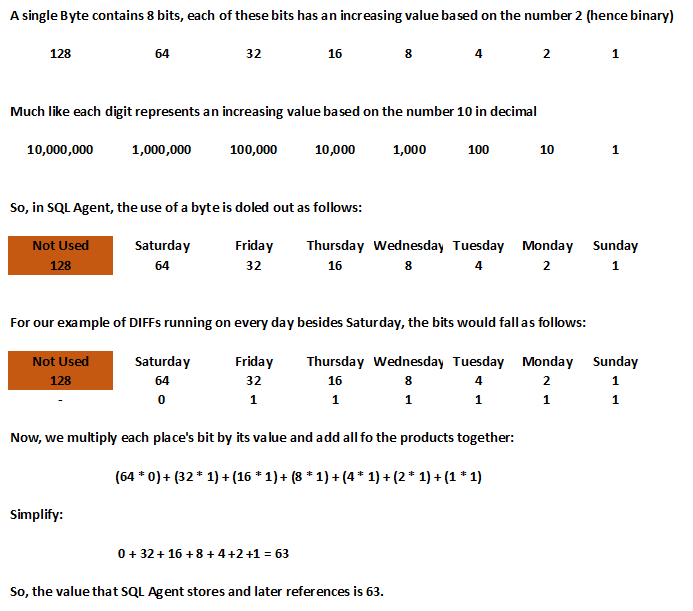
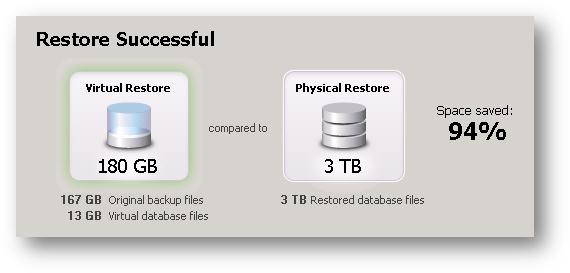
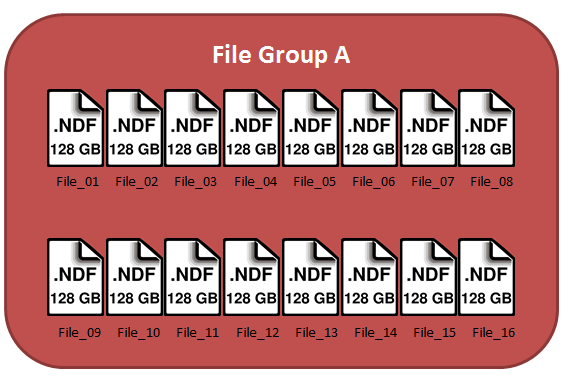
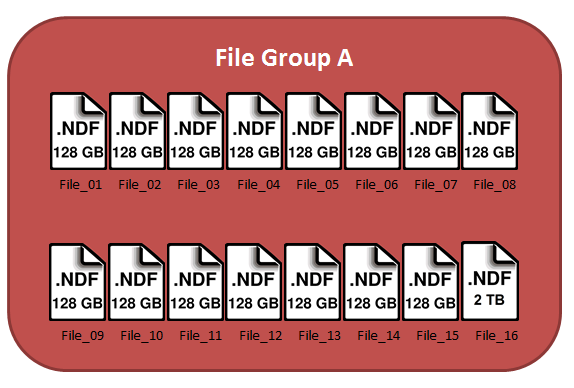 Now, my plan is to empty and remove each file in the filegroup, except File_16. This will cause all of the data to be moved down to this one file. The actual emptying of each file has the potential to be very intensive, however, I have found minimal effects on my servers when doing this. This process can take a very long time, but since I have to move these datafiles online, this is the best way I have found in this sort of scenario. Test this first in a non-production environment. I would write and issue a script similar to this:
Now, my plan is to empty and remove each file in the filegroup, except File_16. This will cause all of the data to be moved down to this one file. The actual emptying of each file has the potential to be very intensive, however, I have found minimal effects on my servers when doing this. This process can take a very long time, but since I have to move these datafiles online, this is the best way I have found in this sort of scenario. Test this first in a non-production environment. I would write and issue a script similar to this: